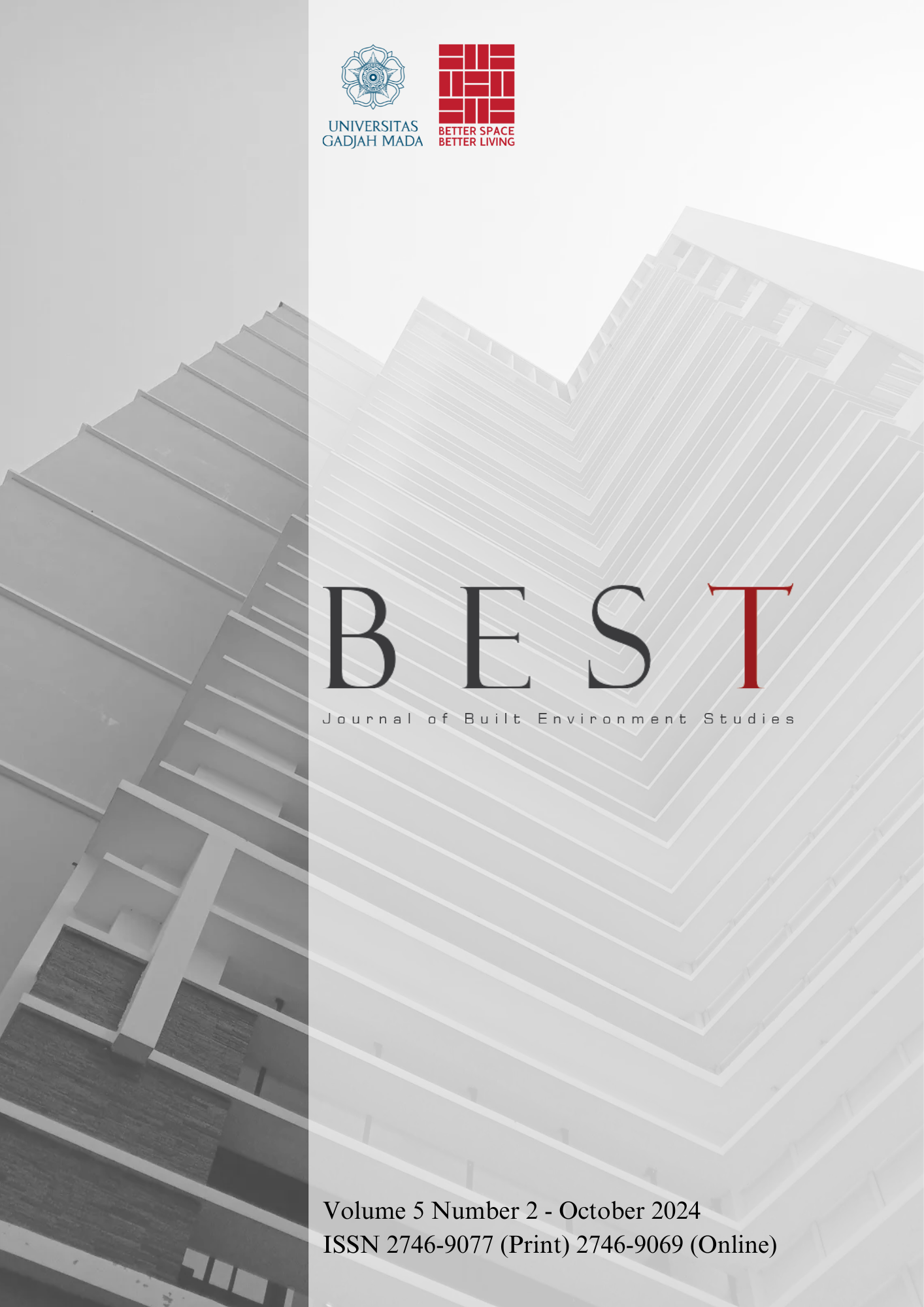Issue
Date Log
ADAPTIVE THERMAL COMFORT: A LITERATURE REVIEW
Corresponding Author(s) : Muhammad Afi Tegar Ramadhan
Built Environment Studies,
Vol 5 No 2 (2024)
Abstract
Adaptive thermal comfort allows users to adapt themselves and their environment to achieve thermal comfort. This research is a literature review of adaptive thermal comfort, which aims to determine comparison to assess the comparison of comfort temperatures and user thermal adaptation behavior from various climatic conditions and ventilation systems. This study found that natural and mixed-mode ventilation rooms were proven to have a wider comfortable temperature range than air conditioning rooms in tropical and non-tropical non-winter climates. The findings revealed the proximity of thermal preferences in tropical and non-tropical non-winter climates in terms of comfort temperature and clothing insulation in natural and mixed-mode ventilation rooms (26.0 ºC and 25.6 ºC, and 0.60 clo and 0.62 clo, respectively). The toughest adaptation is found in winter climates, with high clothing insulation, even when the heater is turned on. Clothing insulation is negatively correlated to operative and comfort temperatures. Through the discovery of wide comfortable temperature ranges in naturally ventilated rooms and the increasing interest in adaptation to windows and fans, air velocity has the potential to be an energy-saving strategy to achieve thermal comfort.
Keywords
Download Citation
Endnote/Zotero/Mendeley (RIS)BibTeX
